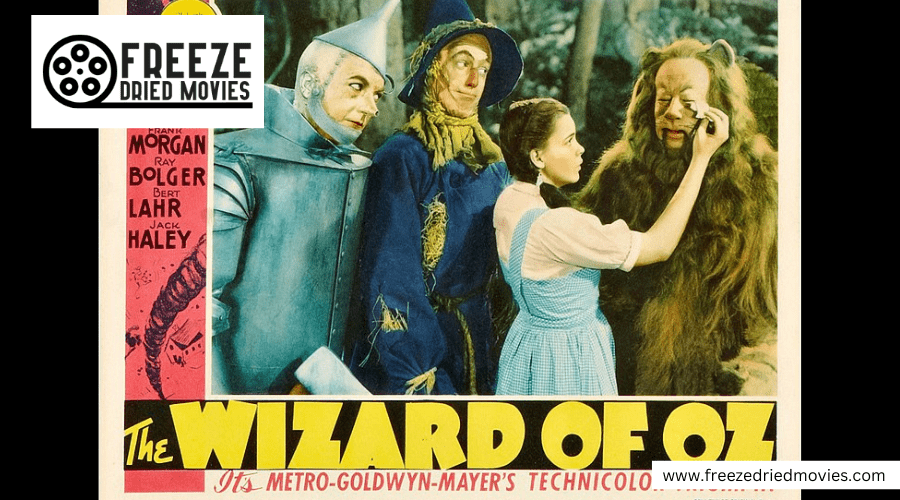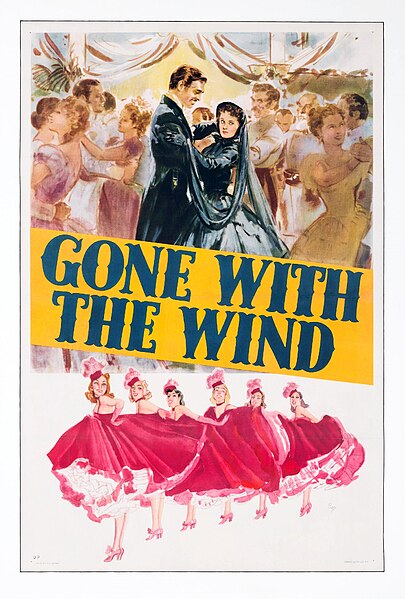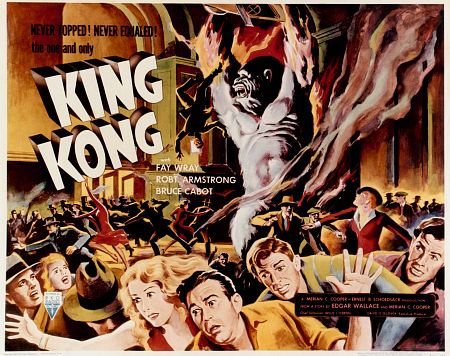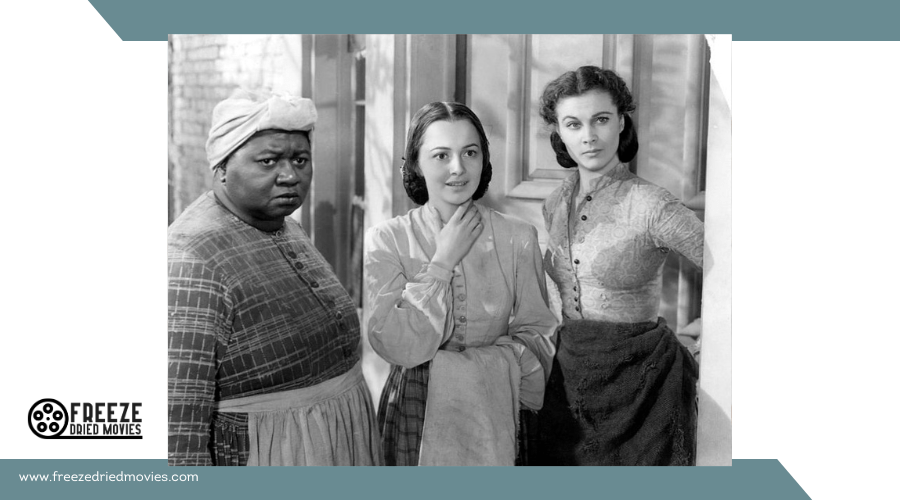How 1930s Cinema Paved the Way for Modern Blockbusters

Modern blockbuster films owe a significant debt to the innovations of 1930s cinema. This transformative period introduced Technicolor and synchronized sound, revolutionizing storytelling and audience experience. The rise of major studios fostered a star-driven culture and high production values, elements still vital today. Iconic films like *Gone with the Wind* and *The Wizard of Oz* showcased grand narratives and visual splendor, paving the way for the franchise models and global marketing strategies in contemporary cinema. Curious about how these early innovations shaped today's film landscape?
The Rise of Major Studios
How did the major studios come to dominate Hollywood in the 1930s? Studios like MGM, Warner Bros., and Paramount Pictures managed to control the industry through several strategic practices.
Firstly, these studios employed vertical integration, overseeing film production, distribution, and exhibition. This approach maximized profits and maintained market control. Paramount Pictures, for example, introduced block booking, which required theaters to show a package of films, ensuring a steady revenue stream and reducing competition from independent filmmakers.
Another key factor was the star system. Studios like MGM and Warner Bros. signed exclusive contracts with actors, turning them into household names. Stars like Clark Gable and Bette Davis not only attracted audiences but also boosted box office returns, reinforcing the studios' dominance.
Additionally, the establishment of the Motion Picture Association of America (MPAA) helped these studios navigate censorship issues and maintain audience trust. By addressing public concerns over film content, the MPAA enabled major studios to keep audiences engaged and returning to theaters.
These combined strategies allowed major studios to solidify their control over Hollywood during the 1930s.
Technicolor Revolution
The Technicolor Revolution introduced vibrant color to the silver screen, transforming the cinematic experience of the 1930s. With the advent of the three-color process in 1932, filmmakers could produce films with lively and visually engaging palettes that greatly enhanced audience immersion. This process involved three separate film strips to capture and project color, resulting in more realistic and rich visuals.
A quintessential example of Technicolor's impact is the 1939 film *The Wizard of Oz*. The film used Technicolor to create a striking contrast between the sepia-toned Kansas and the colorful Land of Oz, leaving a lasting impression on viewers. This technique not only made the film visually stunning but also elevated its storytelling, using color to emphasize narrative elements and emotional depth.
Grand Narratives and Star Power
The 1930s were a transformative period for Hollywood, marked by the advent of Technicolor and the rise of grand narratives and star power. Iconic films like *Gone with the Wind* and *The Wizard of Oz*, produced by major studios such as MGM and Warner Bros., captivated audiences with their expansive plots and emotional depth. These films set the stage for the blockbuster format that continues to thrive today.

The decade also saw the flourishing of the star system. MGM, for instance, cultivated stars like Clark Gable and Judy Garland, who became household names and drew audiences to theaters. Their faces graced movie posters, making their latest performances highly anticipated events.
Studios employed block booking practices, ensuring that theaters showcased multiple films featuring their biggest stars, thereby enhancing both visibility and popularity. The commercial success of sound technology, initiated by *The Jazz Singer*, allowed for integrated music and dialogue, making storytelling more engaging. Combined with Technicolor's vibrant visuals, these elements set a standard for the modern blockbuster, ensuring that Hollywood's magic continued to dazzle audiences worldwide.
Innovations in Sound
As grand narratives and star power captivated audiences in the 1930s, innovations in sound technology played a pivotal role in transforming the cinematic landscape. The introduction of synchronized sound, particularly with *The Jazz Singer* in 1927, revolutionized filmmaking by integrating dialogue and music into narratives. By 1930, approximately 10,000 theaters in the U.S. had been retrofitted for sound, demonstrating the industry's rapid adaptation to this new technology.
Warner Bros. led the charge with the Vitaphone system, which was fundamental in the early sound era. This innovation enabled the production of the first feature-length films with synchronized dialogue, significantly enhancing audience engagement. Early sound films required new production techniques, including the use of sound-dampening devices on set and stationary microphones to capture clear dialogue, thereby altering the filmmaking process.
The success of sound technology was undeniable. By the early 1930s, nearly all feature films incorporated synchronized sound, marking a dramatic shift in storytelling and audience experience. These innovations not only enriched films but also laid the foundation for future cinematic advancements.
Blockbuster Production Values
When you think about blockbuster production values, the impact of high-quality special effects, large-scale film sets, and star-studded casts is undeniable. These elements, which gained significant popularity in the 1930s, continue to shape today's cinematic experiences. Modern blockbusters owe much to the advancements of that era, setting the stage for the visual and auditory spectacles we enjoy now.
High-Quality Special Effects
How did cinema evolve to enthrall audiences with groundbreaking visuals? In the 1930s, high-quality special effects transformed the film industry, setting a new standard for visual storytelling. Special effects took a giant leap with movies like *King Kong* (1933), which showcased pioneering stop-motion animation and miniatures, enchanting viewers and laying the groundwork for future blockbusters.

The introduction of Technicolor during this period elevated production values, as seen in iconic films like *The Wizard of Oz* (1939) and *Gone with the Wind* (1939). These movies used vibrant colors to bring stories to life in ways audiences had never seen before. Elaborate set designs and innovative camera techniques in films such as *Metropolis* (1927) and *The Adventures of Robin Hood* (1938) further exemplified the high production values that would define blockbusters for decades.
Major studios like MGM and Warner Bros. invested heavily in these visual advancements, meeting and exceeding audience expectations. The development of synchronized sound and music, especially with *The Jazz Singer* (1927), added another layer to the cinematic experience, creating a more engaging and visually stunning form of entertainment that continues to influence modern blockbuster films.
Large-Scale Film Sets
During the 1930s, large-scale film sets revolutionized moviemaking, enabling studios to create engaging worlds that captivated audiences. By constructing immersive environments, filmmakers elevated visual storytelling in iconic films such as *Gone with the Wind* and *The Wizard of Oz*. These productions set new benchmarks for production values, with major studios investing significantly in elaborate backdrops and detailed set designs.
The Technicolor process, which gained popularity during this decade, added vibrant aesthetics to these large-scale productions, making them visually striking and highly appealing. The enhanced colors brought film environments to life, transforming how audiences experienced cinema. Simultaneously, the emergence of sound technology in the late 1920s and early 1930s necessitated sets that could accommodate complex sound recording systems. This influenced the architectural layout of film environments, ensuring that sound quality matched the visual spectacle.
Major studios like MGM and Warner Bros. established dedicated sound stages and expansive backlots essential for these high-budget films. By doing so, they laid the groundwork for the blockbuster model we recognize today. Innovations in set design and production values from this era created a blueprint that has allowed modern blockbusters to flourish.
Star-Studded Casts
The 1930s marked the rise of star-studded casts that significantly influenced blockbuster production values. Major studios like MGM and Warner Bros. developed star systems, creating iconic actors such as Clark Gable and Bette Davis. These actors' popularity drove ticket sales and shaped blockbuster production values. At its peak, MGM produced 16-18 films simultaneously, leveraging star-studded casts to enhance their films' appeal and marketing.
The introduction of Technicolor in the 1930s allowed films like *The Wizard of Oz* and *Gone with the Wind* to showcase vibrant visuals, adding to the allure of star-studded productions. Exclusive contracts with top stars enabled major studios to control talent and create high-profile productions that attracted large audiences.
The financial success of films featuring ensemble casts and famous stars during the 1930s established a template for modern blockbusters. Today's blockbusters often rely on high-profile actors to draw in audiences, a practice rooted in the 1930s Hollywood system. By understanding how these early practices shaped the industry, one can appreciate how modern blockbusters continue to thrive on the legacy of star-studded casts.
Impact on Modern Cinema
The impact of 1930s cinema on modern blockbusters is profound, influencing both technical and narrative elements. Technicolor films like *The Wizard of Oz* and *Gone with the Wind* pioneered visually rich storytelling, a hallmark of today's blockbusters. The Hollywood studio system established during this era, where major studios controlled production, distribution, and exhibition, laid the groundwork for the franchise model prevalent in modern cinema.
The advent of sound films, beginning with *The Jazz Singer*, revolutionized cinema by integrating synchronized sound and dialogue, techniques that modern movies heavily rely on for enhanced audience engagement and narrative depth. The 1930s also saw a shift towards longer narrative films, paving the way for multi-act structures that enable intricate storytelling in contemporary blockbusters.
Mass marketing strategies introduced in the 1930s set the stage for today's global marketing tactics used to launch blockbuster franchises. These early promotional campaigns demonstrated the power of reaching a wide audience, a principle that modern blockbusters have perfected to create global phenomena.
Legacy of 1930s Films
The Lasting Impact of 1930s Cinema on Modern Films
How did films of the 1930s leave a lasting impact on today's cinema? By embracing Technicolor, the 1930s delivered visual spectacles like *The Wizard of Oz* and *Gone with the Wind*, setting a standard for vivid, colorful storytelling that resonates in contemporary blockbusters. The transition from silent films to "talkies," initiated by *The Jazz Singer*, enabled narrative-driven movies that blended dialogue and music, creating more engaging cinematic experiences.

The rise of the Hollywood studio system, with powerhouses like MGM, Warner Bros., and Paramount, dominated the industry and established production and distribution practices that are still in use today. The decade also saw the birth of the Hollywood "star system," which leveraged star power to market films effectively, driving ticket sales and setting a precedent for modern blockbuster strategies.
Special effects and elaborate sets became integral, capturing audience attention and making high production values a staple for blockbuster films. The 1930s laid the groundwork for the blockbuster phenomenon we enjoy today.
| Key Aspect | 1930s Contribution | Modern Impact |
|---|---|---|
| Technicolor | Visual richness in films | Standard for visual storytelling |
| Hollywood Studio System | Production and distribution practices | Industry norms |
| Star System | Marketing through star power | Driving force for ticket sales |
The legacy of 1930s cinema is unmistakable, influencing everything from narrative techniques to blockbuster marketing strategies.




